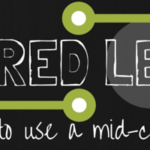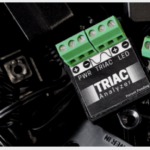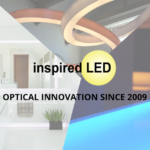 As early as the 1990’s, it was estimated that more than one billion external power supplies were in use across the United States. Since then, the technology boom has led to an influx of computers, laptops, tablets and smartphones, increasing this number dramatically.
As early as the 1990’s, it was estimated that more than one billion external power supplies were in use across the United States. Since then, the technology boom has led to an influx of computers, laptops, tablets and smartphones, increasing this number dramatically.
Most of us never think about these little power hogs plugged in throughout our homes. But due to lack of initial market regulation, early power supplies made extremely inefficient use of the grid (as low as 50% efficiency). Many even continue to draw power even after the connected device had been turned off. The result is higher electric bills, higher demands on power stations, and increased pollution.
 Back in the 90’s it was estimated that without regulatory intervention, these external power supplies would account for almost 30% of our nation’s total energy consumption by the year 2015. So the U.S. and other governmental bodies from across the globe began taking steps to reduce this impact.
Back in the 90’s it was estimated that without regulatory intervention, these external power supplies would account for almost 30% of our nation’s total energy consumption by the year 2015. So the U.S. and other governmental bodies from across the globe began taking steps to reduce this impact.
In 1992 the U.S. Environmental Protection Agency initiated a voluntary program designed to reduce wasteful energy consumption and pollution. This eventually became known as the national Energy Star Program. The first certifications were awarded to computers and monitors, however, it soon became apparent that greater efforts would have to be undertaken in order to reduce energy expenditures.
In 2004, the California Energy Commission (CEC) implemented the first mandatory standards regulating external power supply efficiency. The goal was to reduce global power consumption by ensuring that these power supplies were making economical use of the energy being drawn. This meant reducing the amount of power being dissipated through heat and ensuring that as little energy as possible is wasted when the connected device is turned off (this is known as a no-load power draw maximum, or “quiescent power”).
Over the past decade, these and other efficiency policies have helped to encourage the manufacturing industry to modify and improve their practices.
The most recent requirements from the U.S. Department of Energy (DoE) were published in 2014 and went into effect as of February 10, 2016. As of this date, all power supplies being manufactured or imported for sale in the U.S. are required to meet the new DoE standards for energy efficiency and quiescent power maximums, known as Level VI.
So what do these new requirements mean for you, the consumer? Fortunately there is not much to worry about, as it is the responsibility of manufacturing and resale companies to ensure their products meet these standards.
As a customer, you simply get to reap the benefits of increased energy efficiency no longer drawing on your power bills! There are, however, a few key things to keep in mind, especially for those long term Inspired LED customers who are familiar with some of our older power supply models.
 First of all, these new laws do not apply retroactively, so any power supply purchased prior to February 2016 is automatically “grandfathered” in for the life of the product. For the most part, the newly compliant power supplies maintain the same external appearance. Although, some may actually have slimmed down as a result of internal component optimization. You can identify a new power supply by the Level VI symbol marked on the sticker; older models will display a Level V or IV compliance.
First of all, these new laws do not apply retroactively, so any power supply purchased prior to February 2016 is automatically “grandfathered” in for the life of the product. For the most part, the newly compliant power supplies maintain the same external appearance. Although, some may actually have slimmed down as a result of internal component optimization. You can identify a new power supply by the Level VI symbol marked on the sticker; older models will display a Level V or IV compliance.
The main difference between older and newer power supplies comes from the restrictions on quiescent, or no-load power draws. Level VI compliant power supplies now contain internal feedback mechanisms which ensure that only a minimal amount of energy is drawn when the connected device is not in use. In certain circumstances (when using a switched outlet), a side effect of this new efficiency standard may be visible as a brief “power-on delay”- or a slight hesitation before the device turns on.
This is common across different brands and manufacturers, stemming from the fact that the internal feedback mechanism must ensure power is being drawn in full before allowing it to flow freely. While some power-on delays can be quite noticeable, Inspired LED has taken measures to ensure that our power supplies experience delays of less than 0.5 seconds. Again, please note that this effect is only visible when using a switched outlet to control the on/off function of your lights. If using an in-line switch, dimmer, or remote control, the power-on delay should have no effect on functionality!
Learn more about our new power supplies by visiting our product page and downloading product specification sheets. For more information on our products, or to learn more about Level VI requirements, please contact us at orders@inspiredled.com or call us at 480-941-4286.
Sources:
http://electronicdesign.com/energy/understanding-efficiency-standards-external-power-supplies
http://www.cui.com/catalog/resource/efficiency-standards-for-external-power-supplies.pdf
https://www.energystar.gov/about/history



